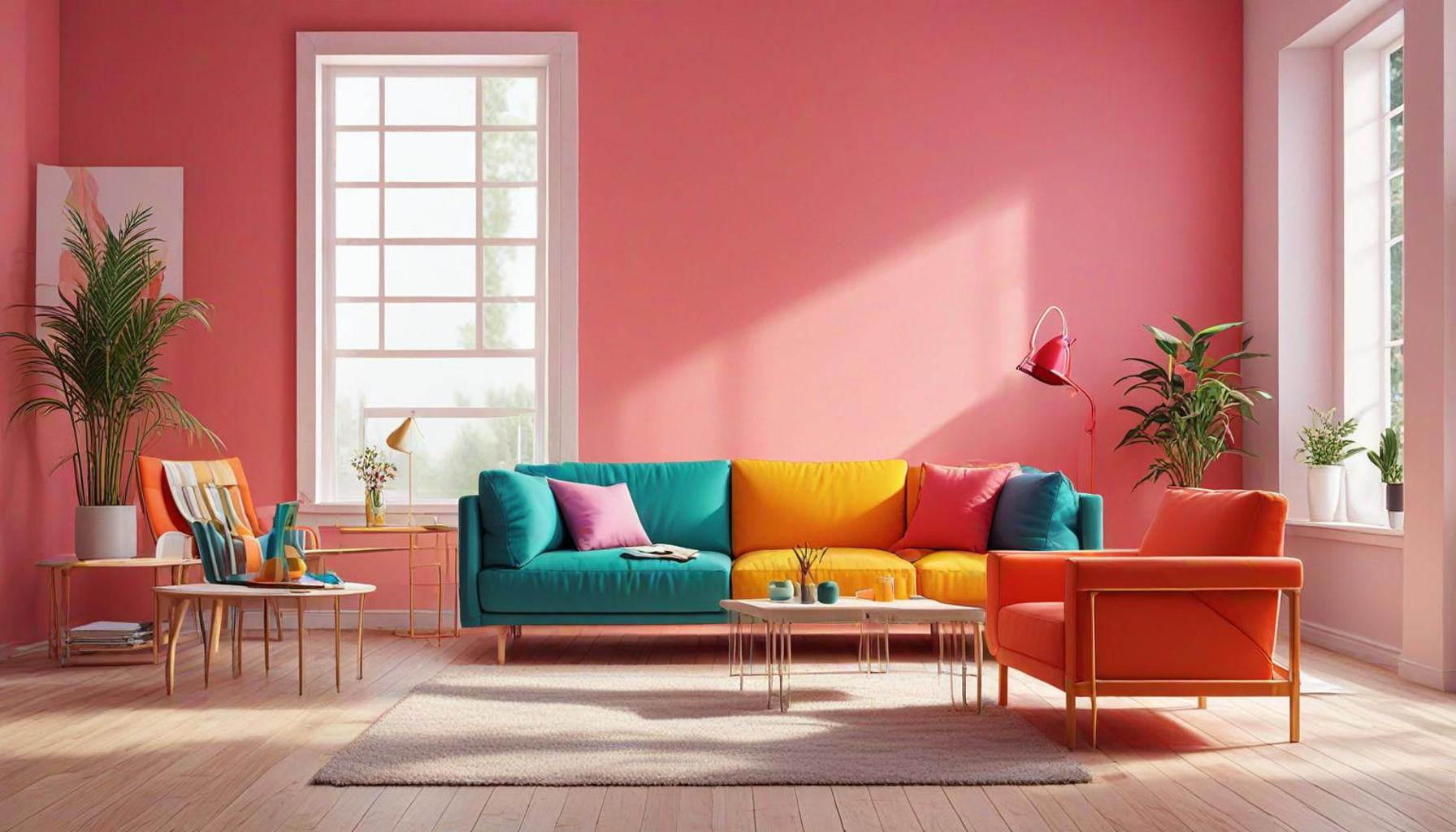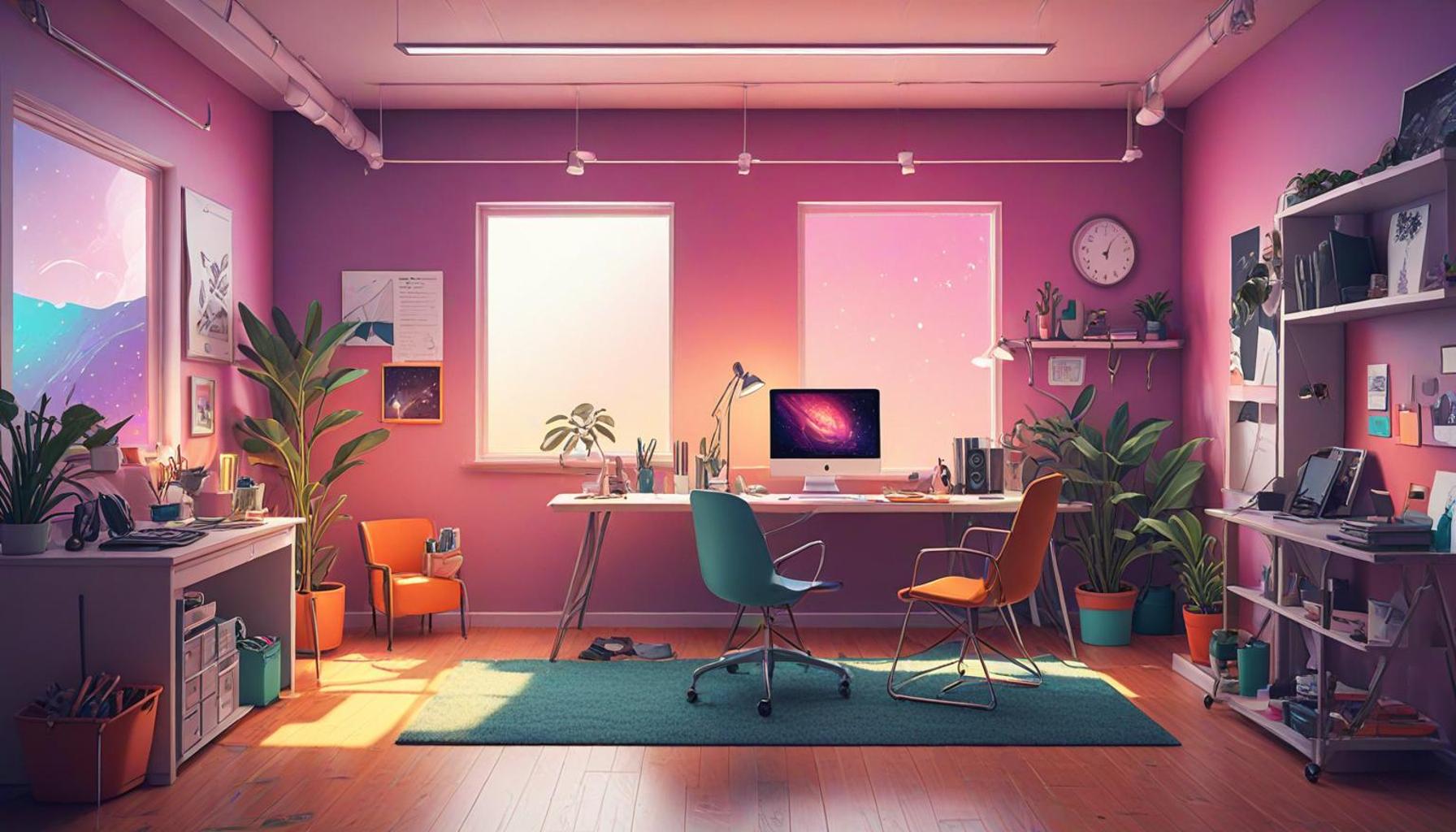The Art of Letting Go: How Space Optimization Contributes to a Minimalist Lifestyle

The Essence of Minimalism in Today’s Society
In a society increasingly characterized by overconsumption and the relentless pursuit of material wealth, the philosophy of minimalism emerges as a refreshing alternative. Beyond just a passing fad, minimalism represents a conscious decision to prioritize what truly matters in our lives. This lifestyle choice allows individuals to cultivate a sense of clarity, purpose, and intentionality in a world that often bombards us with distractions and excess.
One of the foundational elements of minimalism is space optimization. By embracing a minimalist approach, individuals can transform their living spaces into havens of tranquility and functionality. The benefits of adopting such a lifestyle extend far beyond aesthetics:
- Improved mental clarity: Cluttered environments can lead to overwhelmed minds. Research has shown that reducing physical clutter can significantly enhance focus and cognitive function, allowing for better decision-making.
- Enhanced creativity: Open and organized spaces can act as a canvas for creative thought. When distractions are minimized, the brain is more likely to engage in innovative problem-solving and artistic expression.
- Increased efficiency: A well-structured living or working environment can streamline everyday tasks. By knowing where everything is located, individuals can save precious time and energy, which can be directed toward more fulfilling activities.
Decluttering goes beyond simply getting rid of items; it involves a deep reflection on personal values and priorities. Consider how the act of letting go can rejuvenate your spirit:
- Items that no longer serve a purpose can be released, creating physical and mental space for the things that matter most.
- Adopting multifunctional furniture, such as a sofa bed or a coffee table with storage, can optimize living areas, particularly in smaller homes or apartments.
- Implementing a philosophy of intentional purchasing encourages individuals to evaluate their buying habits, resulting in a collection of meaningful possessions that are cared for and cherished.
Diving deeper into the practice of space optimization reveals various strategies that can assist in adopting a minimalist lifestyle. For example, the “one in, one out” rule suggests that for every new item brought into the home, an existing item should be donated or discarded. This method ensures that possessions do not accumulate unnecessarily.
Ultimately, embracing minimalism and optimizing space fosters a lifestyle rich in mindfulness and fulfillment. By inviting serenity into our surroundings, we pave the way for personal growth, deeper connections with loved ones, and a profound appreciation for the present moment. Exploring these concepts further can lead to a transformative journey toward a simpler, yet more meaningful life.

DIVE DEEPER: Click here to learn more
Unpacking the Concept of Space Optimization
At the heart of minimalism lies the vital practice of space optimization, which serves to elevate our living environments while simultaneously simplifying our lives. It’s not merely about decluttering; it’s about crafting space that fosters well-being and productivity. In a country like the United States, where average living spaces are shrinking, especially in urban settings, understanding how to maximize every square foot becomes crucial. The right strategies can transform even the smallest apartments into functional, serene retreats.
One effective starting point is the principle of functional design. This approach emphasizes utility over extravagance. For instance, incorporating modular furniture—such as nesting tables or convertible sofas—allows for versatility that caters to various needs without overwhelming the space. This philosophy encourages the idea that less is more, paving the way for a serene environment that’s easy to maintain.
Additionally, the process of letting go extends beyond physical items. It invites introspection about what truly enriches our lives. Many people in the U.S. find themselves in the habit of holding onto possessions filled with memories, from gifts to family heirlooms. While sentiment can enhance our lives, a critical assessment of these items is essential. Ask yourself:
- Does this item bring me joy or serve a practical purpose?
- Am I keeping it out of obligation or genuine appreciation?
- How often do I actually use or see this item?
By honestly evaluating each piece, you can begin the process of curation, selecting items that contribute positively to your environment and your life. This not only helps in decluttering physical space but also fosters a mindset geared toward intentional living.
Space optimization techniques can often involve a systematic approach, such as the KonMari Method, popularized by decluttering expert Marie Kondo. This method advocates that items should be kept only if they “spark joy.” Such a philosophy resonates with many who are searching for greater meaning and simplicity amid chaos.
Moreover, efficient storage solutions play a significant role in space optimization. Utilizing vertical space through shelving or wall-mounted storage can free up floor area, making rooms feel larger and more open. Employing under-bed storage for seasonal clothing or rarely used items can keep living areas uncluttered and visually appealing. These strategies not only serve practical needs but also align with the minimalist aesthetic, promoting a calm and organized space.
As we delve deeper into the art of letting go, it becomes clear that space optimization is about more than just organizing—it’s a transformative journey towards a mindful existence. The conscious decisions we make about what to keep and what to discard influence not only our physical surroundings but also our mental and emotional states. Understanding these elements can catalyze a powerful shift towards a minimalist lifestyle, opening doors to deeper connections and a more fulfilling life.
The practice of space optimization is central to the minimalist lifestyle, allowing individuals to redefine their relationship with material possessions. By evaluating what items truly bring joy or utility, people can begin the gratifying process of decluttering. This art of letting go is not just about discarding things; it’s about making conscious choices that align with personal values. One crucial component is recognizing the emotional attachments we form with objects. Many times, we hold onto items because they remind us of experiences or relationships. However, by accepting the impermanence of these memories, individuals can free themselves from unnecessary baggage. As you let go, you’re not just decluttering your physical space; you’re also creating mental clarity, which can lead to enhanced focus and productivity.Additionally, space optimization encourages intentional living. By minimizing clutter, individuals often rediscover their sense of purpose and priorities. Spaces that feel open and organized can inspire creativity, making room for new experiences and opportunities. The physical act of decluttering can spark an emotional journey that leads to profound personal growth. Everything you choose to keep should serve a function or purpose, emphasizing the notion that less is indeed more.The minimalist journey tends to invoke an exploration into sustainable living as well, where individuals become more aware of their consumption habits. Embracing quality over quantity fosters a sense of responsibility towards the environment and community. As consumers prioritize sustainability, they often find more meaningful connections with their possessions. This shift in mindset not only promotes a clear, organized home but also contributes positively to the broader world. In summary, the art of letting go and space optimization intertwines physical decluttering with emotional renewal, creating a harmonious balance in life that promotes overall well-being and mindfulness. Embracing this journey can lead to a more fulfilled and intention-driven existence.
DISCOVER: Click here for expert strategies
Embracing Mindful Consumption
In the quest for a minimalist lifestyle, mindful consumption emerges as a critical component of space optimization. This concept encourages individuals to make intentional choices about what they bring into their homes, scrutinizing not just the item’s appearance but its long-term value to their lives. With consumer culture constantly bombarding us with advertisements and fleeting trends, slowing down and assessing needs versus wants can be a considerable challenge. However, embracing this challenge can pave the way for a more fulfilling existence.
Consumer surveys indicate that a significant portion of the population in the United States is beginning to recognize the overwhelming impact of material possessions. A study conducted by the American Psychological Association found that over 60% of Americans feel bogged down by their belongings, which leads to increased stress and anxiety. Consequently, more people are turning to minimalism as a solution—seeking greater satisfaction through fewer, more meaningful purchases. This shift highlights an essential truth: what fills our spaces can also fill our minds.
When adopting mindful consumption, it’s beneficial to consider the life cycle of products. Is the item durable? Does it support sustainable practices? This entails not just evaluating the material worth of an item but its entire contribution to your lifestyle. Many minimalists advocate for the ‘one in, one out’ philosophy, ensuring that when something new enters the space, something else must be removed. This practice continually revisits the necessity of belongings, thereby preventing accumulations that lead to clutter.
Leveraging Technology for Space Management
In today’s digital age, technology can significantly aid in space optimization. Various applications and tools are designed to help individuals streamline their belongings and manage their living spaces more effectively. For example, inventory apps can catalog items, making it easier to visualize what one owns and what may be expendable. Additionally, virtual closet organizers assist in optimizing wardrobe selections, helping people assess which clothing items are truly worn versus those that only take up space.
Smart home technology, such as programmable lights and thermostats, can further enhance the minimalist experience. These tools help reduce resource consumption, allowing for automated adjustments that free up not only physical space but also mental bandwidth. The continuous improvement of smart storage systems—think of automated drawers that know when to open and close or cabinets that reconfigure based on daily needs—also speaks to the future of space optimization, where functionality meets innovation.
The Psychological Benefits of Letting Go
As individuals engage in the art of letting go, the psychological benefits can be profound. Emptiness resulting from decluttering can promote clarity and focus in one’s life. Scientific research has shown that individuals who maintain a clutter-free environment often experience lower levels of cortisol, the stress hormone. This correlation suggests that a well-organized space can contribute to emotional well-being and resilience.
As people step into the realm of minimalism, they often report not just physical space transformation but a holistic shift in their lifestyle and mindset. The minimalist journey invites individuals to question the value of their belongings against their overall life satisfaction. The philosophy encourages them to let go of possessions that do not serve them, leading to a more profound sense of freedom and peace.
In essence, the fusion of mindful consumption, cutting-edge technology, and psychological understanding illustrates how space optimization strategies support a minimalist lifestyle. More than just a trend, this journey is increasingly accessible to anyone willing to embrace the art of letting go, forming a bridge to a more intentional, meaningful way of living.
DISCOVER MORE: Click here to learn about practical strategies
Conclusion
In conclusion, the journey towards minimalism and the art of letting go encompass a transformative approach that goes far beyond merely decluttering physical spaces. By embracing mindful consumption, individuals can critically evaluate their choices, leading to a more intentional lifestyle that prioritizes quality over quantity. The findings show that as more people grapple with the overwhelming nature of material possessions, shifting towards a minimalist paradigm provides not just relief but also a pathway to greater mental clarity and emotional wellness.
Furthermore, the integration of technology for space management serves as a powerful ally, offering innovative solutions that streamline our belongings and enhance our living environments. As we adapt to these advancements, our ability to maintain optimal spaces becomes easier and more efficient, fostering a harmonious lifestyle that encourages creativity and personal growth.
Ultimately, the psychological benefits of letting go invite us to forge deeper conversations about our values, aspirations, and the meaning we derive from our possessions. This holistic approach allows us to experience increased freedom and serenity, aligning our external spaces with our internal desires. With every item released and each conscious decision made, we not only optimize our spaces but also enrich our lives, unveiling a more fulfilling way to exist.
As society continues to grapple with the complexities of consumption and personal fulfillment, the art of letting go stands out as a viable solution—one that beckons each of us to reconsider our relationship with our belongings and aspire to a life redefined by simplicity and intention. Embracing this minimalist lifestyle may very well lead to a profound sense of purpose in our increasingly complicated world.


